A Gabion basket is one of the most straightforward things that someone can make for their garden. It is merely a large mesh cage that is filled with earth. You can fill them with sand and soil, rocks, or concrete. They are easy to build and can be a great way to quickly build a wall or structure in case of a severe weather emergency.
However, there are several different types of gabions that you can buy if you are looking to purchase them. Finding the perfect gabion that will fit your needs is no easy task, but we’ve got a buyers guide that should help answer all your questions about gabions and how best to buy and use them.
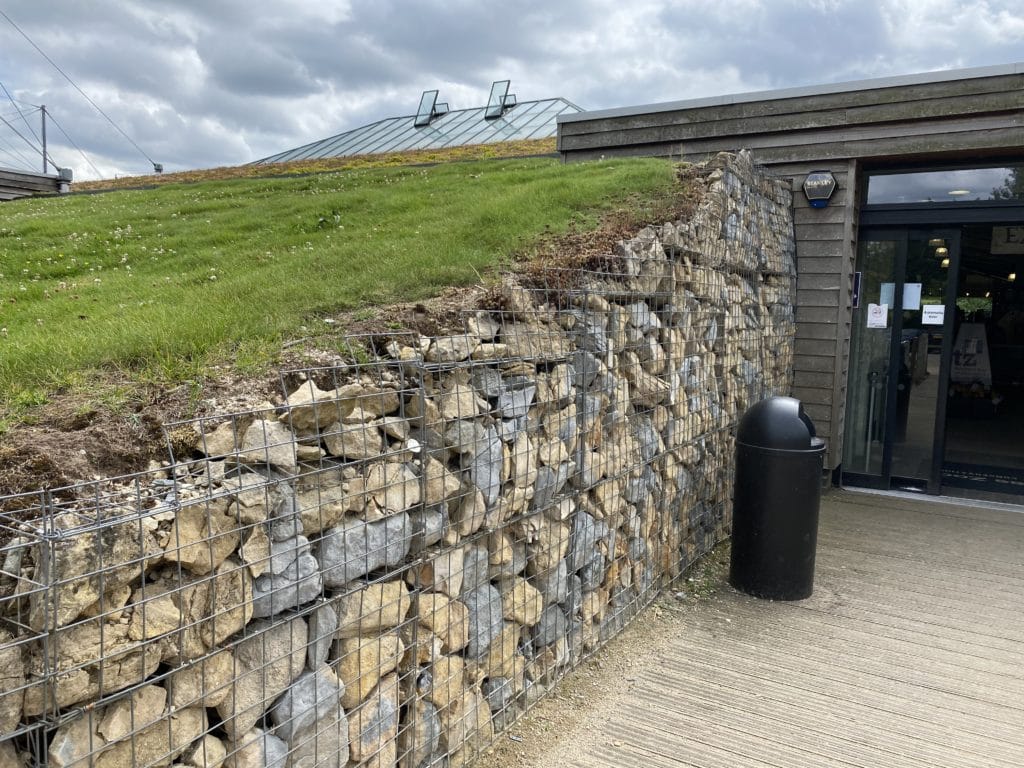
Table of Contents
What is a Gabion?
If you are still having trouble thinking of a gabion, think about mesh chicken wire or netting. It’s filled with small holes and almost looks like a cage. Then form that netting into blocks or cylinders and stuff them full with rocks or pack them with earth. That’s a gabion, and they’ve been a part of engineering since the 14th century.
Other structures that you can make with gabions include pillars, bridges, and walls. While gabions might seem simple, they’re anything but. Plus, you can use them for many different applications.
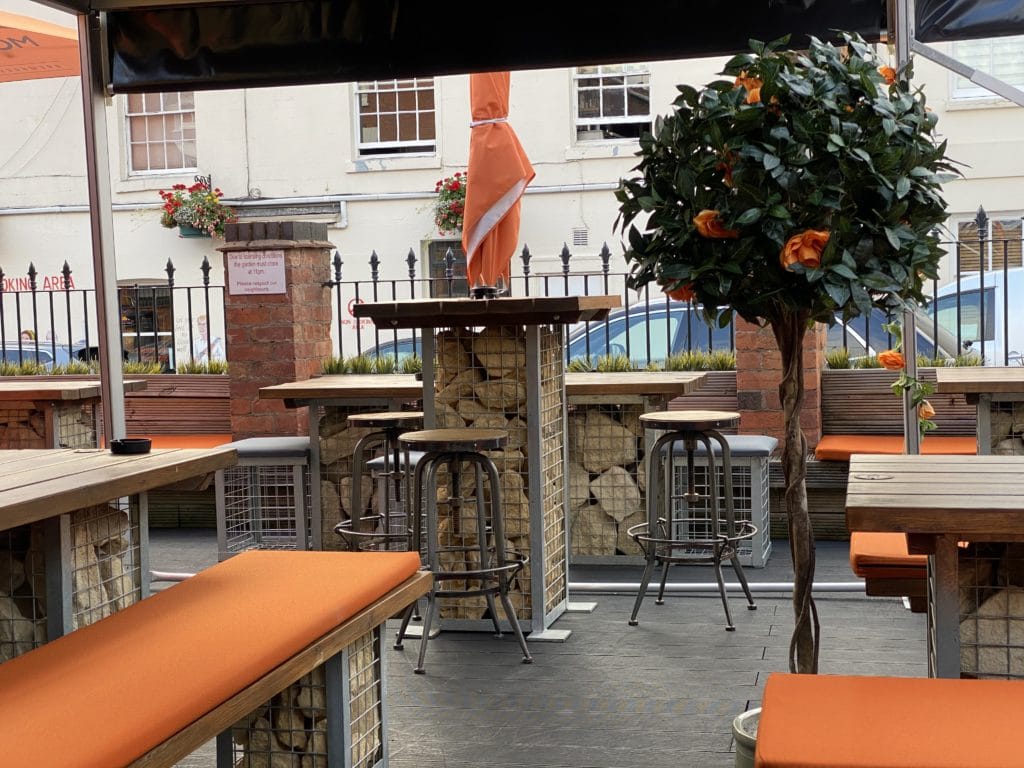
What are Gabions Used For?
People use gabions for construction, decoration, and support for natural landscapes. Gabions were mostly used against riversides to protect them from erosion. As the river water keeps grinding against the river’s slopes, those slopes slowly become weaker and weaker until they cannot hold the river back.
The water can then change course and potentially interact with sewer lines and other areas used by people. This can cause problems as the erosion can get out of control, and people use gabions to keep the river in one place.
Gabions are also helpful for holding back floodwaters during emergencies. When placed along the banks of a river, they can help provide structural support. Plus, since the gabions are made of earth and rock, most builders can cover them with moss or other vegetation to hide them from view.
The History of Gabions
The earliest known gabion was the ancient gabion that the Egyptians built on the Nile River to protect its banks about 7,000 years ago; since then, they’ve been refined and turned into one of the most common engineering tools. Most gabions have stayed around rivers and oceans, acting as walls, dams, and protectors against erosion.
They’ve also been used in construction, such as in Napa Valley in California. The Dominus Winery estates use several gabions connected by wire mesh, which lets airflow into the building more efficiently and naturally.
Bronze Age Gabions
When the Nile River would flood its banks every year, it was a time of rejoicing for the Egyptian people. The Gods had blessed them with another year of fertile farmland and bumper crops. It was when the river flooded outside of harvest season that problems occurred.
If crops and homes were on the Nile River, then they would either get damaged by the floodwater or get damaged when the banks they sat on would get eroded away over time. In order to fix this, the Egyptians would fill wicker and reed baskets with stones and rest them on the banks of the river.
This was the first recorded incidence of gabions being used to prevent riverside erosion from getting out of control, and it worked. We’re still using updated and modernized versions of gabions for the exact same purpose!
Gabions in the Military
Armies worldwide have also taken note of gabion baskets, especially regarding their ease of use and portability. They were (and still are) imposing fortifications that are cheap to build and easy to maintain and move around. Most military gabions were made of wicker and packed with earth to make an early version of a sandbag.
These defensive gabions worked the same way that bulletproof vests work today. They’d be packed with stones and earth, and when a bullet or arrow hit them, the force of the weapon wouldn’t be able to make it through the gabion. During the Middle Ages, they were used as an easy siege work to set up and were still used by the American Civil War.
They were placed around artillery pieces to protect gunners from artillery fire and snipers, working quite well. If the battle ended early or the guns needed to be moved around, the gabions could be picked up and moved with the army. Gabions would also see permanent use at fortifications with cannons.
Today, armies still use modern versions of gabions as mobile defenses. These gabions often work to protect soldiers from explosions and artillery fire and are placed to protect large groups of soldiers who would otherwise be vulnerable to attack.
Armies are taking large fabric baskets and covering them with mesh. They fill the baskets up with earth and sand and have these modern gabions act not just as walls but also as fortifications and buildings’ walls.
Example Uses of Gabion Baskets
While some of the most common uses of gabion baskets are around rivers and slopes that people need to stabilize, that is far from the most common use.
Many people are turning to gabions to make beautiful walls for gardens or ponds. Shorter gabion walls can have wooden slats placed on them to make natural benches, or they are used to make stone plant holders. The stone gabions are covered with a few topsoil layers, which you can use to grow plants. Whatever you use them for, gabions are certainly an inexpensive way to bring a little natural beauty to your backyard or garden.
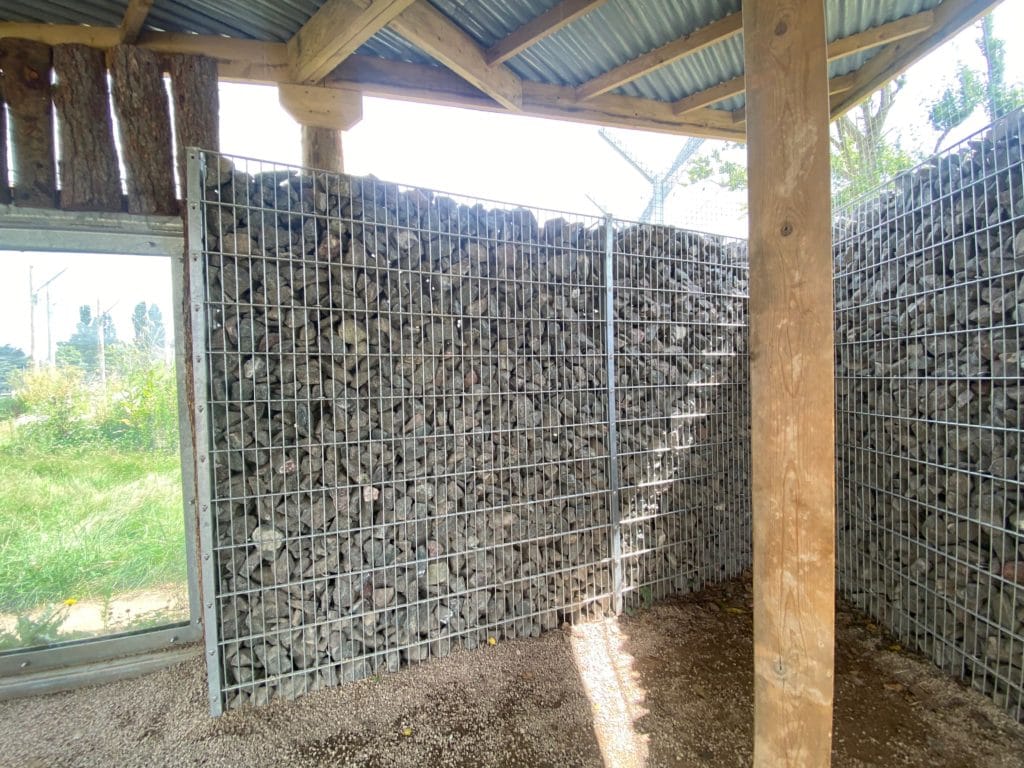
Additionally, gabions are often used along the United States coastline to absorb waves and prevent heavy erosion. They are often the first line of defense if the coast gets hit by a hurricane, and even in calmer weather, they do their job well.
Gabion Basket Types and Accessories
The most important part of a gabion is the mesh basket that holds the stones and earth in place. If that mesh fails, so will the gabions, so the gabion materials must be durable and long-lasting.
The most common type of gabion is the gabion basket. The net wire mesh is formed into a cube, packed with stones, and then the boxes are stacked on top of one another to make an effective wall.
Another type of gabion basket is a gabion mattress. This mattress is one of the shorter gabion baskets, and people place them wherever waves are present to deal with channel-based erosion. The mattresses almost look like stairsteps and can help with both river protection and bridge protection.
Gabion wire mesh is often placed on the slopes of hills along roadsides to prevent rockfalls on the road. The mesh keeps the hill where it is and increases the soil strength. If you ever decide to drive along a bare hillside, be thankful for the wire mesh keeping that hill in place!
Finally, gabion sacks are perhaps the easiest to picture. They look exactly like hot dogs made of mesh. Once they are stuffed with rocks and earth, they are placed vertically next to one another, eventually making a wall. These gabions can be made up quickly and are ideal for emergency conditions where speed is of the essence.

Gabion Accessories
There are often several types of accessories used to support and maintain the gabion structures. These accessories often aren’t needed unless the gabion wall needs to be supported by more than what the posts and rocks inside can provide. Here are a few of the accessories you can get.
Spiral wires are the first type of gabion basket, helping you connect the flat gabion boxes’ sides together by connecting the side mesh through the spiral wire’s hoops.
C rings are another way to fasten the gabion corners together. Fastening is often faster than spiral wire. However, C rings do require a professional C ring gun for assembly.
U clips continue the trend of one letter naming for gabion cage fasteners. These clips have more tensile strength than C rings but do cost a bit more. However, they’ll last just as long as your gabions will!
Finally, a stiffener can help with bulging near the middle of your gabion basket. They can help keep the structures tidy and allow for the mesh wire to withstand the weight of all the rocks pressing against it.
All of these accessories can come in handy whenever you are installing gabions, and you’ll need to examine your project and see if you need the extra support. If you do need some extra help, then the clips and stiffeners will be able to support your gabions and prevent them from falling apart.
How Are Gabion Baskets Installed?
While they often don’t need any concrete fortifications to secure them, the gabion baskets do have a process of getting installed. They require a secure installation so that the wall doesn’t topple over or fall apart. This starts with the type of soil you’ll be placing your gabions on top of, especially when building a large gabion wall.
Let’s say that you are installing a gabion wall in your backyard. After you lay out a blueprint for the wall and cleared the soil, you’ll need to ensure that the soil can support your structure. Heavy soil should support the gabion wall, while lighter soil often needs work under the surface.
While you don’t need a concrete foundation to support the wall, you’ll need to ensure that the gabion can sustain itself. You can install a wider gabion to help support the structure and take the pressure off the soil; that way, your gabion won’t collapse under the weak ground.
Once that’s done, you’ll need to install some support columns along the area where the wall will be. After the pillars are secure, you can build the gabion baskets around them, placing the mesh around the baskets. Then fill the mesh up with rocks, and soon you’ll have a sturdy wall that won’t ever come down.
People install gabion baskets in the commercial sector the same way. Posts or other forms of support hold the baskets together.
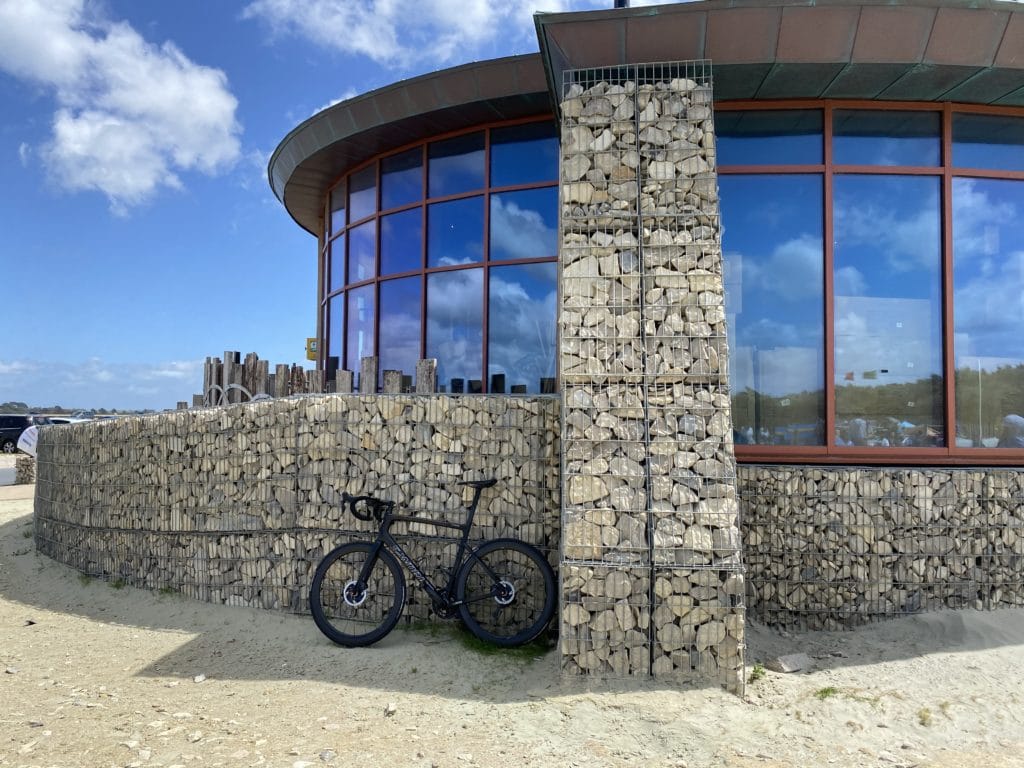
Installing backyard gabion walls can be a fun and easy little project that will look amazing when it’s done. You can then take the wall a step further by adding lights, plants, or other decorative elements.
Pros and Cons of Gabion Baskets
Gabion baskets are one of the preferred methods of erosion control for several reasons. First, they often have a very nice look about them. They have a natural look that often goes well if you place them next to a river or other waterway, and people love that.
In addition to their look, most gabion structures are very tough and able to hold back heavy loads. The gabion baskets’ wire isn’t just there to hold in the earth or stones you pack in; it also supports the structure. Install these properly, and they can support themselves without too much extra foundation work.
Gabion walls are also easy to build and place as well. There’s no need to mix concrete or spend time overly preparing the ground to support a concrete wall; instead, you can just fill the baskets with your choice of material, and you’ll be good to go.
The last big pro of gabion baskets is that they are permeable to water. Rather than being pressed on by water, it can slide through the rocks’ gaps and move to the other side. They are great for drainage and can handle being wet.
The Weaknesses of Gabion Baskets
However, these baskets do have some weaknesses. While easy to install, gabion baskets can be expensive, especially for a larger project. If you plan on building a larger structure out of gabions, it can cost a bit of money.
Additionally, larger structures can take more time to install. You might have to bring some friends and some equipment to get a bigger project done on time.
Despite these weaknesses, the pros of gabion baskets certainly outweigh the cons!
What Can You Use to Fill a Gabion Basket?
You can fill a gabion basket with anything around you. Most people tend to use rocks to fill up their gabion baskets, although old bricks or sand can work just as well. Some people even use unique options like wine bottles or logs to create a textured effect.
You can use anything, but just remember that the basket has to be permeable. Otherwise, you just have a fancy wall and not a gabion.
Since a gabion needs to be filled all the way through, you can save a bit of money by buying nicer looking rocks for the outside layers of your gabion. Then, for the parts that people don’t see, you can use cheaper looking rocks that don’t look as good.
Whenever you try to fill a gabion basket, think about what type of texture and effect you are going for. Do you want a lovely stone wall or a gabion stuffed with different wood and stone colors?
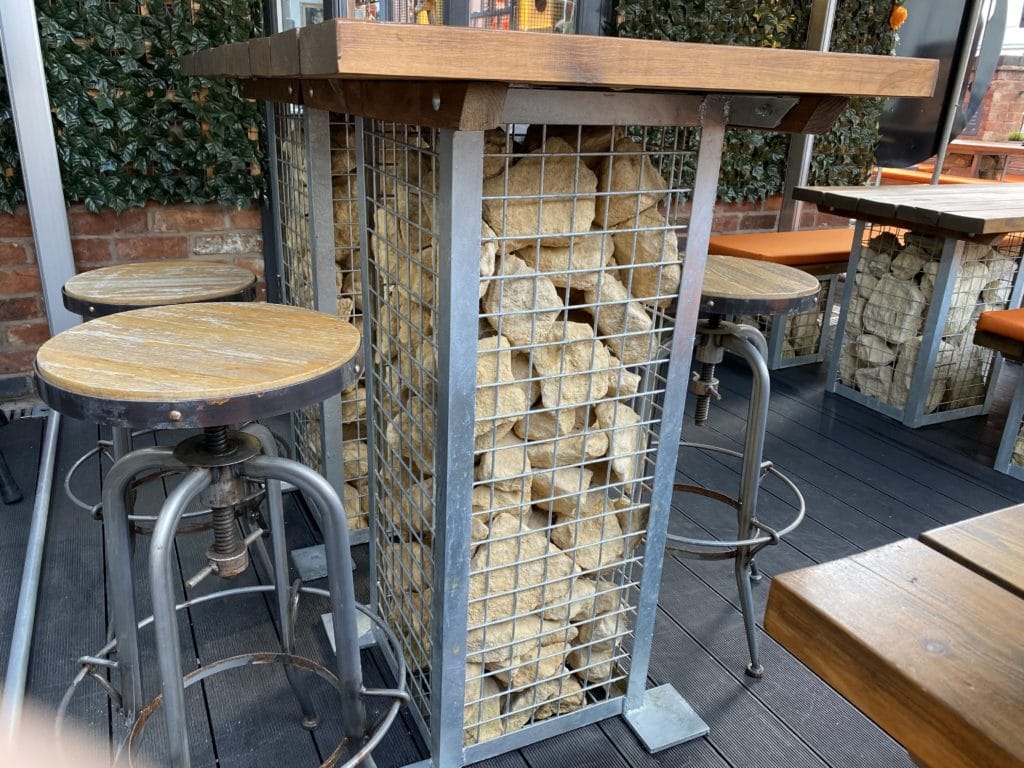
Once you know what you are looking for, try to see what’s around you. It’s often much cheaper to find the rocks that you need, rather than buying them. See if there’s a quarry or rocky area near your home that might allow you to borrow some stones. Or, if you want to use bricks in your gabion baskets, see if any of your neighbors are doing any home renovations.
If they are doing any demolition, they’ll probably have some old bricks that they aren’t using anymore. See if you can borrow those bricks to fill your gabion baskets.
A little resourcefulness can go a long way with your wallet, and it can be fun to repurpose old materials into a new structure for your garden or backyard.
Other Uses For Backyard Gabion Baskets
A good gabion basket wall isn’t just used to look nice in your backyard. Sure they can add a little touch of nature to your yard, but they can be so much more. Gabions are versatile, and you can use them for many backyard projects, rather than just being a decorative wall.
You can easily arrange some gabions into a circle and create a firepit with them rather than using regular stone blocks. You can also make a low wall, build a bench on top of it, or even rig a waterfall to cascade through the stones.
You can also use gabions as planters. Once you create the structure, you can fill the middle with a flower pot and plant your choice! The natural baskets will make your flowers and ferns pop, and if you put a little effort into your gabion baskets, they will look very cool!
Gabion baskets can be functional as well as decorative. You can set some up to make a soundproof wall to control noise, keep your yard free from being buffeted by wind, and give yourself some extra privacy. If you are going this route, you’ll have natural privacy without the hassle of installing screens or soundproof walls.
Of course, you can also use them for their intended purpose of erosion control and slope management as well, perfect if you have a property right beside a river or on a hill.
No matter what you want to use a gabion basket for, it will add style and natural touch to any home or backyard!
How Expensive Are They?
Gabion baskets are not that expensive. Since they come as flat squares of wire that need to be assembled on-site, you can purchase many of them for minimal cost. Most good quality gabion baskets cost around 30 to 50 dollars, and they cost even less if you choose to fill them with stones or materials from your local area.
Depending on your project’s size, you could end up paying a couple of hundred dollars to get unfilled useful quality baskets, but they’ll be made and built to last.
What Are Gabion Baskets Made Out Of?
Gabion baskets need to be strong but flexible. The mesh that the baskets are made out of keeps all the rocks and materials inside and secure. If the mesh fades or develops a crack, then the structure will be useless and cause severe problems.
Most gabion baskets, especially those in the commercial or architectural businesses, are made from steel. Builders coat the welded mesh with 10% aluminum and 90% stainless steel. This mixture keeps the mesh durable, allowing it to stand both against time and the elements.
The aluminum inside the mesh also helps to absorb light, and eventually, the mesh turns into a dark grey color that blends in with the rocks. This is perfect if you are dealing with a gabion basket or gabion wall in a public place. Soon you won’t be able to see the mesh, only the rocks that make up the gabion wall.
Gabion walls can be made of stainless steel and PVC piping as well, but you will still see the mesh as the color will not change.
Made of Steel Gabions
Steel gabions are beneficial for several reasons, and they are features that you need to consider whenever it comes to buying your gabions. Galvanized steel is resistant to the elements and corrosion in the air. It’s also very thick and rigid, so the basket will not change shape whenever you fill it with rocks.
You always want to make sure that you buy 5mm gauge steel, as lighter steel will move and bulge with the rocks as you fill the basket. This can cause problems as the mesh will stretch and can be misshaped and eventually damaged.
Finally, most 5mm steel has a 50 by 50-millimeter gap size. The size of the gap meals that less stress is placed on the mesh itself when you fill it with rocks.
Benefits of PVC Coating For Gabions
PVC coated gabions are a more expensive version of traditional gabion baskets. The steel wires are coated with primer and then with a fuse bonded coating of PVC. This is typically used on the coastline when gabions are used against hurricanes and bad weather, as repeated exposure to saltwater can weaken and erode the mesh.
But with a PVC shell, gabions can be protected from corrosion and the damaging effects of saltwater. If the water can’t get in to weaken the mesh, then the gabions will last for much longer in a harsher environment.
Where Can You Find Gabion Baskets?
You can find gabion baskets at most home and garden stores and from companies that specialize in them. They are easy to find and just as easy to install, and you just need to have some measurements in mind.
If you are going to build a gabion wall for your backyard, make sure to measure the wall’s volume and have those measurements with you. Most gabion baskets come pre-cut and measured, and you’ll need to figure out how many baskets you need.
For the materials to fill them, you can try to find rocks and stones locally or order them online. Pre Filled Gabions are often more expensive than their unfilled counterparts, but if you do get them, then all you have to do is stack them up, and you have your wall.
Small Baskets or Big?
Once you determine how big your wall needs to be, you’ll need to think about how big you want your baskets. If you need six feet of gabion basket for your wall, is it easiest to get one six-foot gabion basket or two three-foot ones?
Considering that you’ll receive or buy most gabion baskets in their flat form and will need to assemble them into their 3-dimensional shapes, think about what’s more comfortable to move. A six-foot-long piece of metal? Or two three-foot-long ones?
Smaller baskets are more comfortable to carry and move around, and they are also easier to fill. You can touch the bottom of the basket and layer rocks in by hand without too much trouble. Then you stack on the next empty box and repeat.
Larger gabion baskets are great for big projects that you would want to take on over a weekend. One example would be making a gabion bench, as you could set up a large six by 2-foot gabion on its side and fill it up lengthwise. Since a bench doesn’t need to be very tall, you can quickly complete the longer project without extra equipment.
How To Pack Rocks Into Your Gabion Basket
Filling a gabion basket with rocks seems easy on the surface. But you don’t just want to fill your gabion; you also want to make sure that it looks nice. After all, a good gabion isn’t just a structure; it’s something you want to admire. A poorly put together gabion isn’t that at all!
How you pack rocks into your gabion will depend on the type of stones that you have available, and traditionally there are three types of stones:
- Pebbles and tiny rocks
- Chunks of rock
- Flat round rocks
The first thing you need to do when creating a gabion is to pick out nice looking rocks. These rocks might be flatter, similar in shape, or the same color, but they should all look about the same.
First, make a layer of rocks at the bottom of your gabion basket. This layer should be flat and should have some of those nice looking rocks on the outside. The two rocks closest to the edge of the gabion are the rocks that people will see, so you want to make sure they look nice.
Ensure that the layers are as stable as before moving onto the next layer and routinely step back to examine the gabions from further away. This will allow you to catch any bulging where the rocks tend to compress under their weight.
Stones that are chunks can go in the middle since people won’t see them, and smaller pebbles can go in between them. You’ll want to make sure that the stones are packed in nice and tight, to make sure that the gabion looks as uniform as it can.
Take Your Time
It’s worth stepping back after every two layers and walking around your gabion, ensuring that the rocks are tight and not creating any gaps between them. It’s going to take some time to make the gabion look the way you want it. Since the baskets will last quite a while, you’ll need them to look good.
It’s not worth it to rush and then have to take apart your entire gabion just to redo a small part of it. Go slow, step back and examine the project, and make sure that the front, back, and sides all look lovely. That’s what people will see, after all.
Buying The Perfect Gabion Basket
Whether you want a nicely built Gabion wall or a set of gabion baskets to adorn your backyard, these natural, cheap, and easy to look at structures will most certainly have your back. They are customizable, fun to build, and won’t take too big of a chunk out of your wallet.
If you are looking for the perfect gabion basket, make sure you know what it looks like in your mind before you go and start shopping. Try to think about what you would fill it with, how tall it would be, and what you would use it for. Having all this information on hand will only make it more comfortable whenever you start looking.
But above all, whenever you build a gabion basket, have fun with it. The basket is going to last a lifetime, and it’s such a unique piece of metal and stone that you’ll want to have fond memories of putting it together. Whether you are making a gabion bench, firepit, or wall, the process will stay with you forever.
